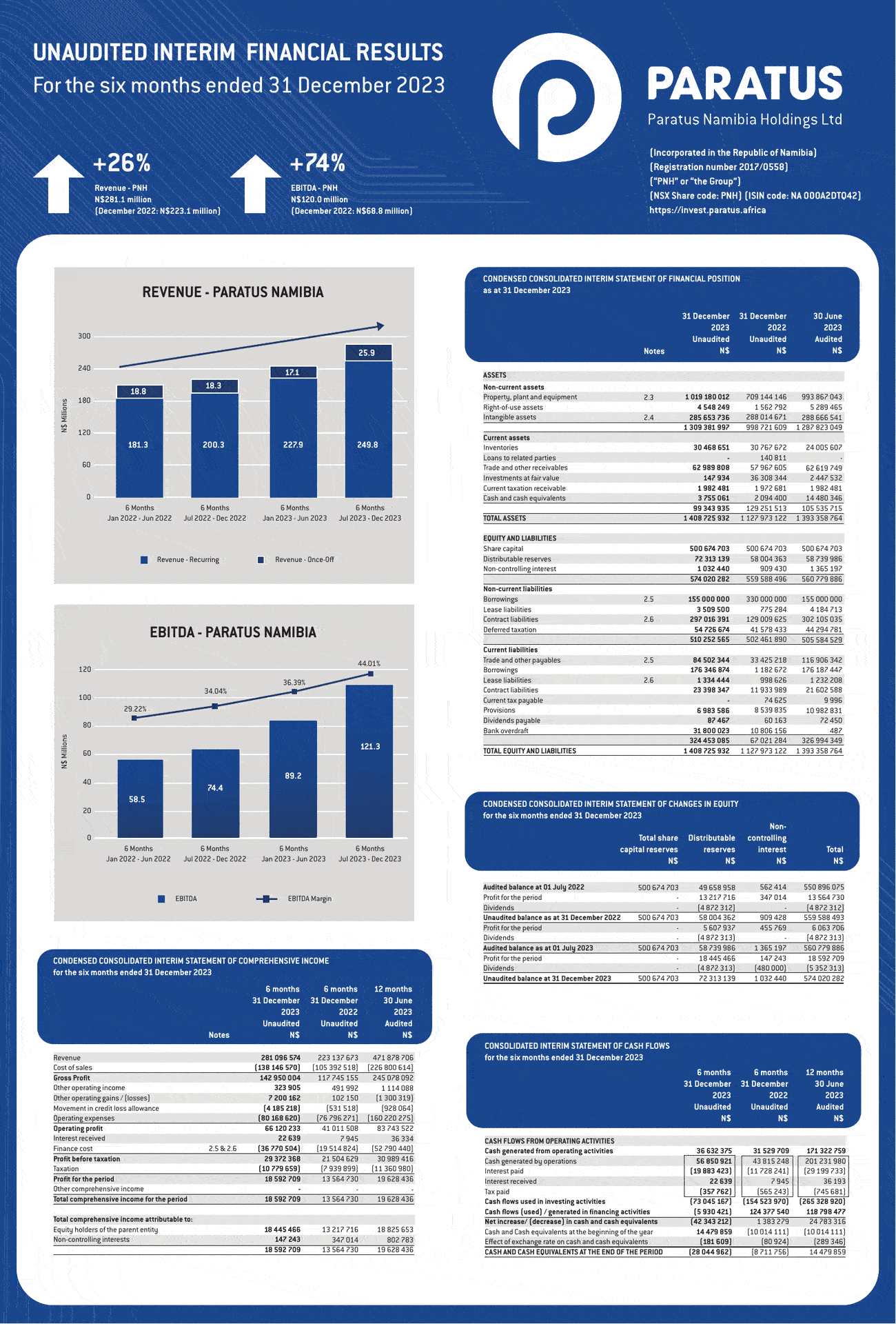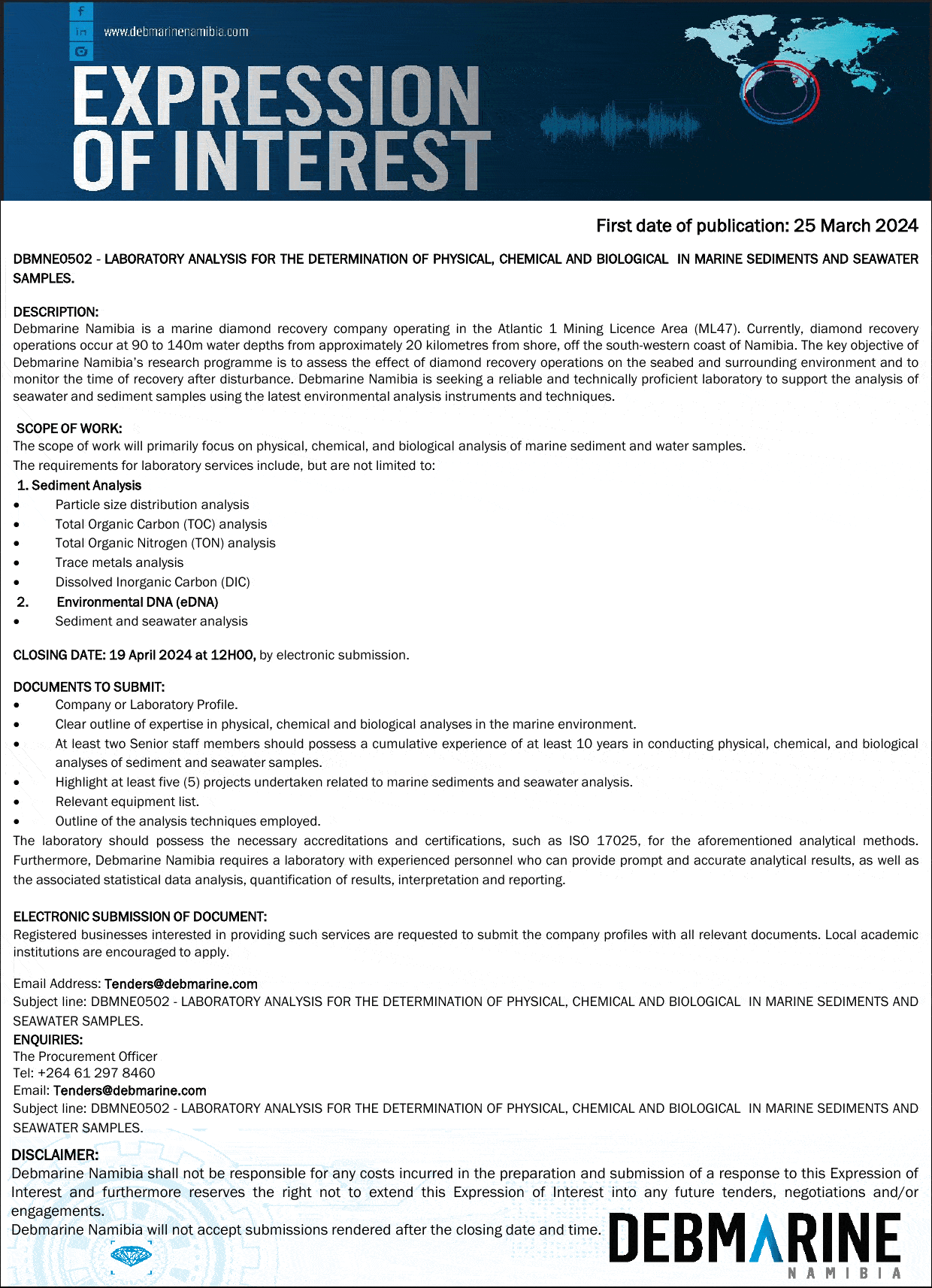
First chickies arrive for Namib Poultry
 Namib Poultry Industries announced this week that its first parent stock arrived on the evening of 01 November at their brand new broiler facility at Okapuka north of Windhoek..
Namib Poultry Industries announced this week that its first parent stock arrived on the evening of 01 November at their brand new broiler facility at Okapuka north of Windhoek..
The parent stock also known as “breeding stock” consists of 15,000 hen and 1,500 cock chicks.
Travelling time from Carolina (South Africa) to Windhoek was 36 hours, with only 3 mortalities.
Breeding stock forms part of the first step in the production value chain. The first phase involves rearing the breeding stock, males and females separately for 20 weeks. Thereafter they are transferred to the lay house where they can roam freely. Hens and cocks are then kept together to mate and produce fertile eggs in a natural process. The hens lay eggs for 43 weeks and at 63 weeks they are sold live to whoever buys “traditional” chicken from the farm.
Breeding stock is raised on a different formula than broiler stock to ensure fertility.
The eggs go to the hatchery where they hatch after 21 days. The day-old chicks are transferred to the broiler houses for the 5-week growing stage. After 35 days they weigh roughly 1.8kg and are slaughtered in the abattoir. Broilers are raised on a formula that leads to rapid weight gain but then the birds tend to be infertile.
The slaughter process is somewhat gruesome for the uninitiated. An operator grabs the chicken and hangs it upside down by its legs in a conveyor system. As the suspended chickens move along, the tip of the bill briefly touches a water tray through which an electric current runs. This electrocutes the bird, making the heart pump faster to get better bleeding. After bleeding, the chicken goes through a defeathering process ensuring a clean carcass. The chicken is then eviscerated automatically. The clean carcasses go through an air chill line for cooling to keep the cold chain and secure the quality of the meat. The factory will be equipped with an automatic dissecting line cutting 6,000 chickens per hour in variations of 4, 6, 8, 9 or 10 pieces after which the portions are packed and labelled.
This is the general process for chicken production anywhere in the world.
The breeding stock that arrived in Windhoek, a week ago, is the first batch and every 8 weeks, new parent stock will arrive to build up the flock to a point where sufficient eggs are produced to hatch the required number of day-old chicks for the broiler farms.
A broiler farm needs to take care of two crucial production factors, one biological and one financial. Disease is the biggest production threat as it spreads rapidly through the broiler population due to the crowded, moist and warm conditions. Once a broiler house has been infected, it must be quarantined for six months during which time it must also be sterilised.
When broilers reach 1.8kg at around 35 days, they must be slaughtered immediately and put into cold storage. Every single day after reaching optimum live weight, they consume chicken feed equalling roughly ten percent of wholesale value meaning they eat up all the profit within ten days.
A big spin off would be the chicken manure that could be converted to organic fertilizer. Namibia currently imports chemical fertilizer at a high cost. The poultry project would be able to produce enough fertilizer for about 20,000 hectares per year. The mortalities are taken out on a daily basis and the abattoir waste would be converted into by-product carcass meal for the production of other animal feed like pork feed, and dog food. Namibia in compliance with EU requirements, is not allowed to feed by-product meal to cattle.
Namib Poultry intends selling Namibian chicken in the market by March 2012. “We are extremely excited. When the first parent stock arrived at the “Klein Okapuka Farm” we knew history in the food production industry just started” said Gys White, General Manager of the company.












































